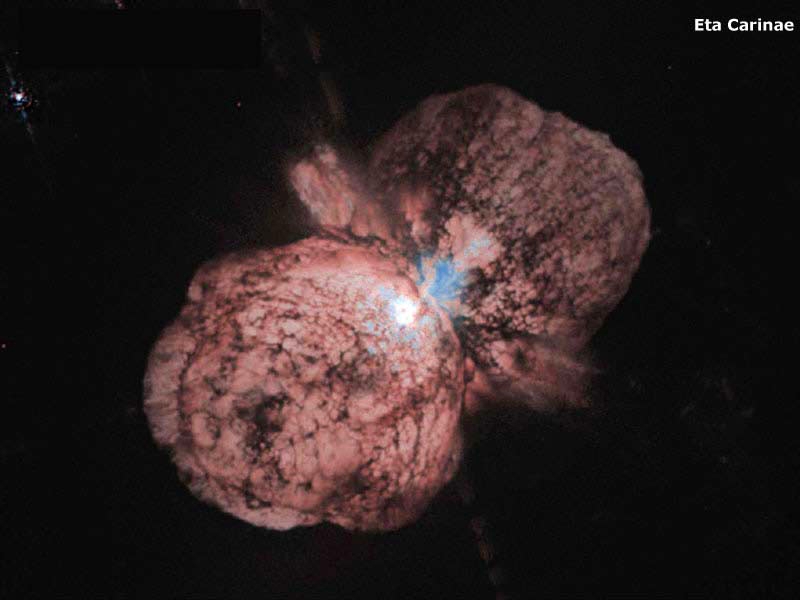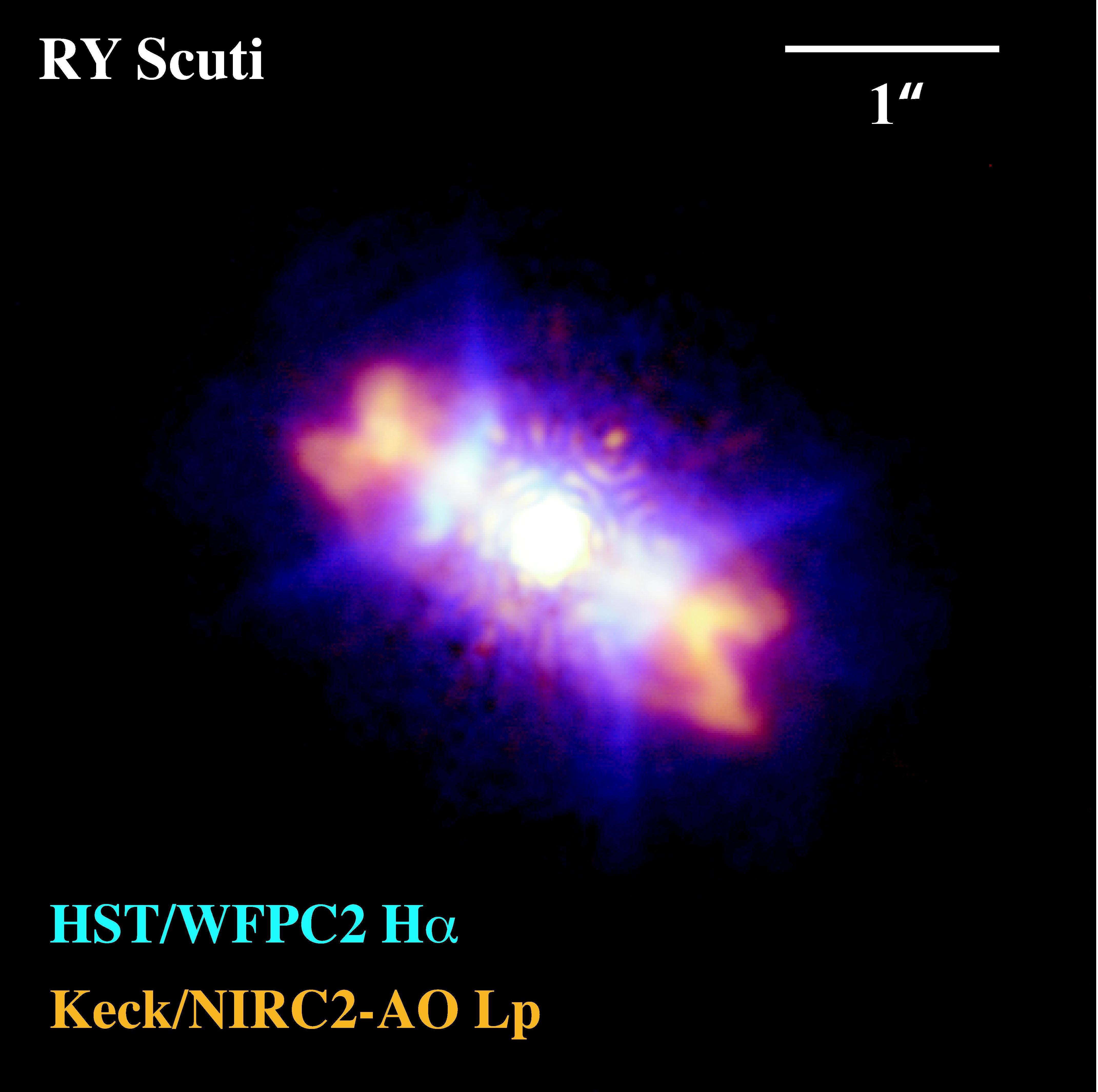Wyoming 2013 REU Project
Discovering and Characterizing Massive Binary Star Systems
O- and early
B-type stars (15 - 60 solar masses!) produce some of
nature's most spectacular explosions when they end their
lives. These are supernova
and
gamma-ray burst explosions that are often so luminous
they can outshine entire galaxies. Many, if not all,
massive stars appear to be part of a binary or multiple star
systems, and these companions may be essential for producing
certain classes of supernova and gamma ray bursts as one
star transfers mass to another. Such systems also form
exotic remnants such as pulsars,
neutron-star + neutron-star binaries or even
neutron-star + black-hole
binaries.


Our team of professors and 6 summer students will conduct
an intensive spectroscopic observing campaign using the
2.3-meter
Wyoming Infrared Observatory telescope to measure 1)
how often massive stars have close companions, 2) how close
the companions are, and 3) the masses of the companions.
These are the essential ingrediants needed for theories of
massive star formation and to predict the numers of
explosive events throughout the universe. REU summer
students will learn to observe (and be able to do a LOT of
observing!) with a major telescope facility, learn common
astronomical software (IRAF, IDL, Python, LaTeX, html) to
reduce spectroscopic data, learn time-series analysis and
orbital parameter fitting (the same techniques used to find
radial velocity planets), and lead a poster presentation at
the winter meeting of the American Astronomical Society.
- Papers we'll read together
- Chip's talk on massive binaries
- Introduction to stellar classification
- Introduction to close massive binaries, Hilditch, chapter 1 Introduction to close massive binaries, Hilditch, chapter 1
- A Fresh Catch of Massive Binaries in the Cygnus OB2 Association (Kobulnicky et al., 2012, ApJ, 756, 50)
- An Updated Look at Binary Characteristics of Massive Stars in the Cygnus OB2 Association (Kiminki & Kobulnicky 2012, ApJ, 751, 4)
- Presupernova Evolution of Massive Single and Binary Stars (Langer, N. 2012, ARAA, 50, 107)
- Progenitors of Core-Collapse Supernovae (Smartt,S. 2012, ARAA, 47, 63)
- Collapsars: Gamma-Ray Bursts and Explosions in ``Failed Supernovae'' (MacFadyen, A & Woosley, S. 1999, ApJ, 524, 262)
- The Progenitor Stars of Gamma-Ray Bursts (Woosley, S., & Heger, A. 2006, ApJ, 637, 914)
- Toward Understanding Massive Star Formation (Zinnecker, H, & Yorke, H., 2007, ARAA, 45, 481)
- Key People
- Helpful References
- Danny's Links



